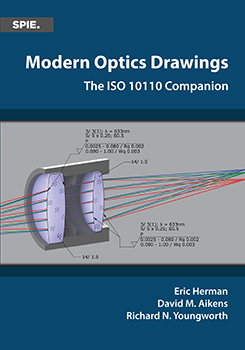|
Although not covered in the ISO 10110 series, understanding how to evaluate a complete optical system is important when creating component specifications. Such considerations are especially crucial when determining tolerances for an optical design. Optical components may be manufactured for a variety of systems with different applications, and therefore benefit from different requirements and specifications. The same factors are true for system evaluation metrics. Optical system metrics may vary from basic optical properties (such as focal length or field of view) to complex measurements of image quality [such as the modulation transfer function (MTF)]. Along with fundamental optical system metrics, additional aspects of the complete system may drive requirements—such as stray light, eye relief, or system transmittance. Understanding the stray light (unwanted radiation), for example, may drive mechanical aspects of the system design and influence the optical system functionality even more than, for example, surface form or other conventional optical tolerances in some applications. There are many different ISO standards that can be used to evaluate an optical systems performance. As this book is intended as a guide to the specification and tolerancing of optical components using the ISO 10110 series on drawing notation and not per se about system evaluation, only basic descriptions are provided here to introduce some of the key optical system functional metrics and their evaluation. |
|
|


